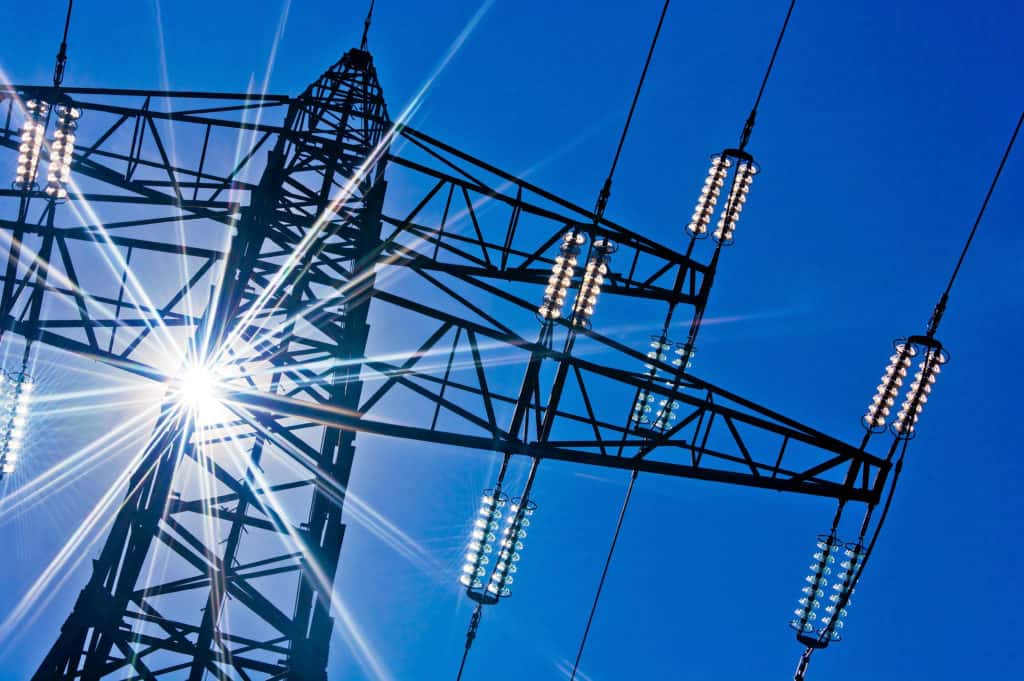Fossil and Nuclear NDT Solutions for the Power Industry

Power generation means unleashing vast energy, transforming it, and harnessing it. Fossil fuel power plants tap into organic materials formed over the course of millions of years. Nuclear energy is an emissions-free source that comes from splitting atoms in a reactor to power industry and homes. When working with such colossal forces, it’s vital that the equipment and machinery used are reliable shift after shift and cycle after cycle.
Nondestructive testing (NDT) is recognized by both national regulations and industry consensus standards as a critical element that helps ensure that power process piping, boilers, steam generators, and all other power generation equipment is fit for use. Fossil and nuclear NDT solutions play a crucial role in the development and maintenance of power infrastructure globally.
Zetec has decades of experience providing fossil and nuclear NDT solutions, including ultrasonic and eddy current technology. In the course of providing NDT solutions and services, Zetec has developed documentation about a range of fossil and nuclear NDT solutions. To help you find this information, we’ve collected a selection of articles covering related topics.
NDT Applications for the Fossil and Nuclear Power Industry
Fossil and nuclear power plants are complex, interconnected systems that convert either fossil fuels or nuclear fuels to heat, generate steam, and then direct that steam to turn powerful turbines. The turning of these turbines generates electrical currents. The entire process, from fuel to power, requires precise nondestructive testing of the components to ensure they continue to operate to their specifications without flaws.
Read more about NDT solutions for the power generation industry.
Safety and reliability are incredibly important in nuclear power generation, as any failure can have serious and long-lasting consequences. Strict adherence to regulatory practices and rigorous inspections with in-depth testing, however, can prevent these failures. Early detection of material flaws can prevent accidents and keeps nuclear power plants operating safely.
Read more about the role of nondestructive testing in nuclear power plant operations.
Common Fossil and Nuclear NDT Testing in Power Generation
At the very core of a nuclear reactor is the rod cluster control assembly with each cluster consisting of rodlets stored deep in a pool of borated water. The vibration of the rods during plant operations can cause fretting wear. Wear of these rod cluster control assemblies (RCCA) is a serious concern since they are integral to control of the nuclear reaction. Periodic inspection of RCCA assemblies is vital, but conducting these inspections is challenging due to the radiation hazard. To combat these issues, Zetec provides an NDT testing solution for conducting these inspections.
Read more about rod cluster control assembly (RCCA) inspection system.
A steam generator is a form of heat exchanger that uses thousands of feet of small tubing to transport hot water from the reactor core through an external medium, usually water. The small diameter of the tubing keeps the water in the tubes from boiling, and the heat is transferred to the exterior water, creating steam to turn the turbines. These tubes play a vital role in containing radiation from the reactor, but they are subject to extreme stress and corrosive actions. Nuclear NDT solutions for these tubes can make a big difference in ensuring safe operations of the power plant.
Read more about how to improve steam generator tube inspection processes and prevent critical failures.
Heat exchangers come in a variety of forms, from towering steam generators used in pressurized water reactors to a diverse array of other types. A common factor across heat exchanger types is the presence of tubing inside a larger structure that allows for the transfer of heat without cross-contamination. The quality of this tubing, and the integrity of the vessel surrounding the tubing is important because they are part of the system that keeps radiation contained in a closed loop. Heat exchangers rely on nondestructive testing to ensure integrity during fabrication and throughout their operational life. Zetec has provided the equipment to conduct this testing for decades and has developed techniques to better analyze the results.
Learn more about:
- Improving heat exchanger inspection analysis (webinar)
- Improving Heat Exchanger Inspection Data Confidence with Automated Analysis
- Best Practices for Eddy Current Testing of Heat Exchanger Tubes
Nuclear power plants make heavy use of austenitic metals in their tubing, piping, and machinery. Stainless steels and exotic proprietary alloys like Inconel® or Monel® resist corrosion due to heat, pressure, and the unique structural hazards of nuclear reactors better than carbon steels. They are, however, more difficult to weld and more sensitive to critical flaws due to welding errors. Testing and eliminating these flaws before equipment goes into service is absolutely vital. Ultrasonic NDT can provide the data needed to analyze austenitic welds and ensure that they are fit for service.
Read more about austenitic weld inspections (white paper).
Due to the challenging environment present in nuclear power generation, corrosion over time through chemical and mechanical action is a concern. Routine corrosion mapping can help to identify wear and corrosion on pipes, tubing, and pressure vessels. Zetec has developed an agile ultrasonic tool that can be used for corrosion mapping in nuclear NDT.
Read more about:
Inspecting Turbines in Fossil and Nuclear Power Generation
The power generating element in any power plant is the turbine. These consist of a rotor that is made up of many blades mounted to a central shaft. When steam is pumped into the turbine, the blades catch the steam and turn the shaft, generating power. The blades and the blade roots where they attach to the hub are subject to incredible stresses, and even the slightest crack can lead to expansive damage. Zetec had developed NDT inspection solutions to detect developing flaws in turbine blades and blade roots in spite of challenging geometry and cramped inspection environments.
Read more about turbine blade and blade root inspection (slides).
The rotary shafts blades are mounted to are subjected to the force captured by all the blades along their length, and it is critical to both power generation and public safety that they don’t have flaws or weak points. Inspection of these rotary shafts is made all the more challenging by the fact that increasing needs for energy generation has resulted in larger shafts. Zetec has developed an ultrasonic testing array probe that overcomes the limits of traditional ultrasound to enable the inspection of large rotor shafts.
Read more about large rotor shaft inspections (white paper).
Choosing Fossil and Nuclear NDT Inspection Equipment
Nondestructive testing is essential to delivering power to people around the world. A stringent NDT inspection of equipment, tubing, and pipes is required by industry consensus standards during and after fabrication. Testing is also often required routinely during the operating life of the power plant by government regulation.
Power plant contractors and builders should choose NDT testing equipment from a company that not only provides quality tools but also has developed solutions for every fossil and nuclear NDT inspection need. Zetec has decades of experience providing ultrasonic and eddy current NDT testing solutions for equipment like power generation turbines and the tubing found in heat exchangers and steam generators. This way, you can rest assured that your power plant is doing its due diligence to keep processes safe and effective.
Zetec is an experienced provider of NDT equipment for fossil fuel and nuclear power generation. Contact Zetec to learn more about our fossil and nuclear NDT solutions.





